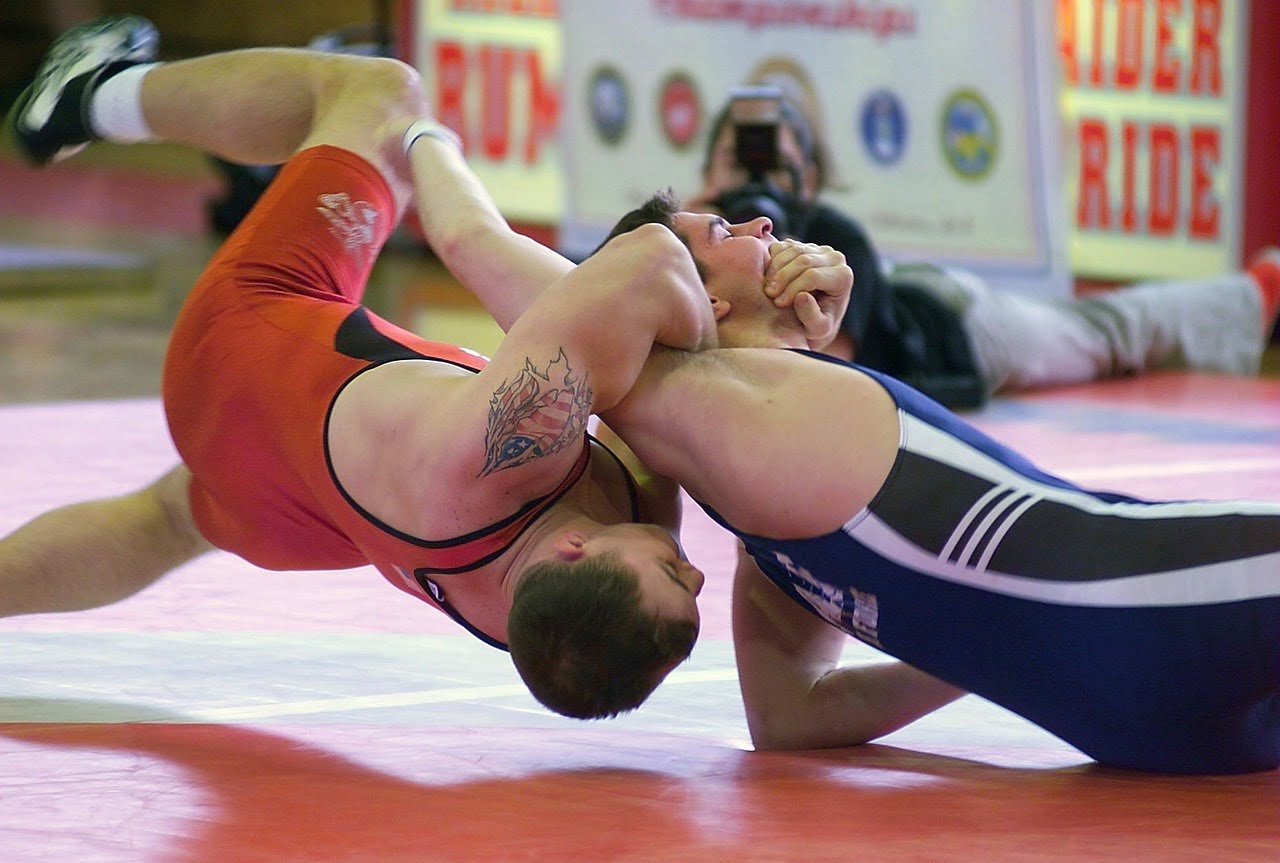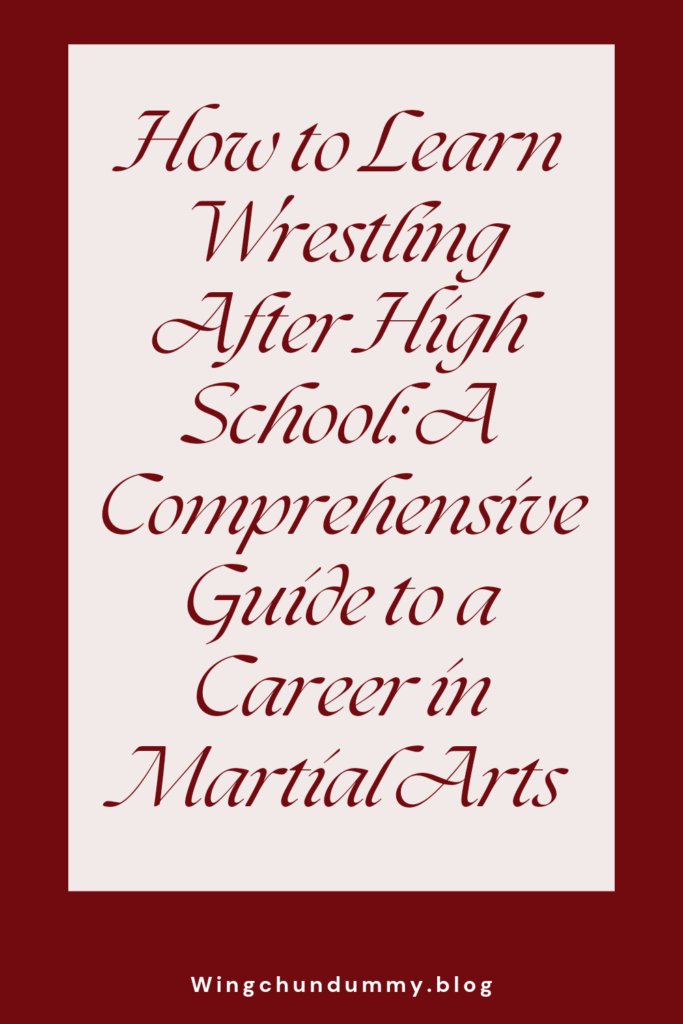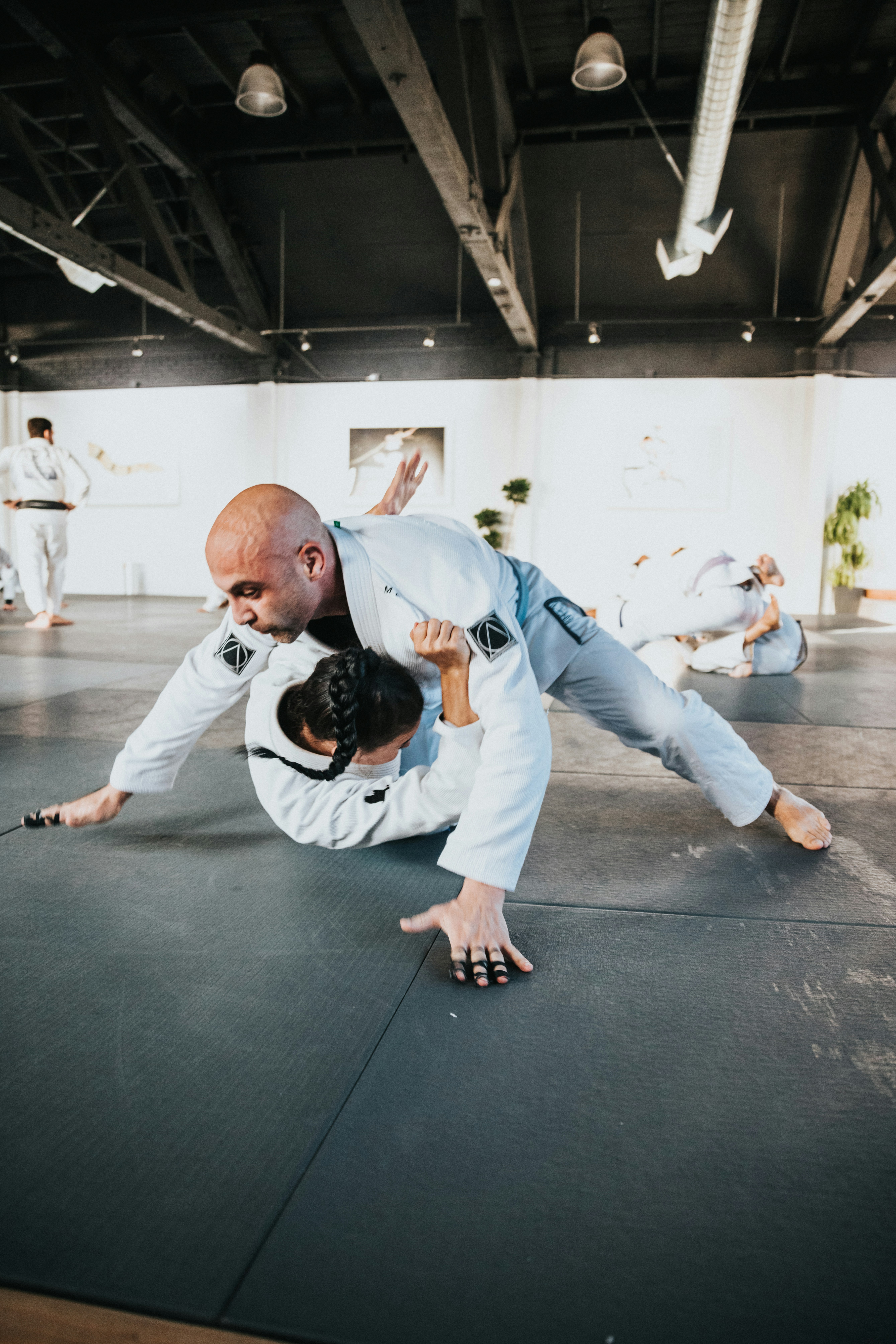Transitioning from high school to the next phase of life often brings significant changes, and for wrestling enthusiasts, this period is no different.
Learning wrestling after high school offers a multitude of benefits that extend far beyond the physical realm.
Whether you are aiming to pursue a professional career in martial arts or simply wish to maintain your fitness and discipline, continuing wrestling can be a rewarding endeavor.
One of the foremost advantages of engaging in wrestling post-high school is the enhancement of physical fitness.
Wrestling is a comprehensive activity that engages multiple muscle groups.
improves cardiovascular health, and augments overall strength and endurance.
The physical benefits are accompanied by mental gains.
The sport fosters resilience, strategic thinking, and a heightened sense of self-discipline, qualities that are valuable in both personal and professional realms.
Moreover, wrestling can significantly enrich your social life.
Post-high school wrestling provides opportunities to connect with like-minded individuals, fostering a sense of community and camaraderie.
Whether you join a local wrestling club, participate in amateur competitions.
or engage in martial arts training centers.
the social interactions are a vital aspect of the experience.
In this comprehensive guide,
we will delve deeper into the journey of learning wrestling after high school.
You can expect to gain insights into effective training techniques, career paths within the wrestling and martial arts sectors.
and tips for balancing your wrestling pursuits with other life commitments.
Whether you are a novice seeking to explore wrestling for the first time or an experienced wrestler aiming to take your skills to the next level.
this guide will provide the information and resources you need to succeed.

Setting Goals and Creating a Training Plan
Embarking on a wrestling journey post-high school begins with setting realistic and achievable goals.
Establishing clear short-term and long-term objectives provides a roadmap that can guide your progress and keep you motivated.
Short-term goals might include mastering specific techniques or improving fitness levels.
while long-term goals could encompass competing at higher levels or transitioning into coaching roles.
Creating a tailored training plan is essential to meet these goals effectively.
Start by assessing your current skill level and identifying areas for improvement.
Your training plan should include a mix of technical drills, strength and conditioning exercises, and mental conditioning.
It’s advisable to consult with experienced coaches or mentors who can provide valuable insights and personalized advice.
Consistency and discipline are pivotal in achieving success in wrestling.
Consistently following your training plan, even when faced with challenges, builds resilience and ensures steady progress.
It’s important to track your progress regularly.
keeping a training journal can help you stay accountable and make necessary adjustments to your plan.
Balancing wrestling training with other life commitments is another critical aspect.
Whether you are pursuing higher education, working, or managing personal responsibilities.
it’s crucial to find a harmonious balance.
Prioritize your time effectively by scheduling training sessions during periods when you are least likely to face conflicts.
Incorporating rest and recovery into your plan is equally vital to prevent burnout and injuries.
Ultimately, setting well-defined goals and creating a structured training plan are foundational steps in your wrestling journey.
Embrace the process with patience and dedication, and remember that progress in wrestling is a marathon, not a sprint.
With the right mindset and strategic planning, you can achieve remarkable milestones in your martial arts career.
Finding the Right Wrestling Gym or Club
Choosing the right wrestling gym or club is a critical step for anyone looking to pursue a career in martial arts post-high school.
The first consideration is location. Opting for a gym that is conveniently situated can ensure consistent attendance, which is crucial for progress.
Proximity to home 🏡 🏠 or work can make it easier to integrate wrestling training into your daily routine without excessive travel time.
Coaching quality is another pivotal factor.
The expertise and experience of the coaching staff can significantly influence your development as a wrestler.
It’s beneficial to look for gyms that employ certified coaches with a proven track record in wrestling.
Researching the coaches’ backgrounds, including their competitive achievements and coaching credentials, can provide insights into their capability to guide you effectively.
The facilities available at the gym are also essential.
A well-equipped gym with adequate wrestling mats, strength training equipment, and recovery areas can enhance the training experience.
Quality facilities not only support diverse training routines but also help in preventing injuries by providing a safe environment.
Furthermore, the type of training programs offered should align with your goals.
Some gyms may focus on recreational wrestling, while others might offer more competitive programs.
It’s important to identify a gym that matches your aspirations, whether you aim to compete at a high level or are seeking to improve your skills for personal development.
When evaluating potential gyms, visiting them in person is highly recommended.
Observing a training session can help you gauge the atmosphere and coaching style.
Speaking with current members can provide valuable perspectives on the gym’s culture and community.
A supportive and competitive community can foster motivation and camaraderie.
which are beneficial for long-term commitment and success in wrestling.
By carefully considering these factors
— location, coaching quality, facilities, and training programs — you can make an informed decision in selecting the right wrestling gym or club to support your martial arts career aspirations.
Essential Skills and Techniques for Advanced Wrestling
Transitioning from high school wrestling to advanced levels requires mastering a variety of skills and techniques.
Wrestlers need to focus on advanced takedowns, escapes, reversals, and pinning combinations, all of which form the core of competitive wrestling.
Developing proficiency in these areas involves not only learning the moves but also understanding when and how to deploy them effectively during a match.
Advanced takedowns, such as the single-leg and double-leg takedowns, are crucial for gaining control over an opponent.
Mastery of these techniques can make the difference in competitive scenarios, allowing wrestlers to execute swift and decisive actions.
Equally important are escapes and reversals, which enable a wrestler to transition from a defensive to an offensive position.
Techniques like the switch, granby roll, and stand-up are essential for breaking free from an opponent’s hold and regaining control of the match.
Pinning combinations are another critical aspect of advanced wrestling.
Moves such as the half-nelson, cradle, and cross-face can secure a win by immobilizing the opponent.
These techniques require precision and strength, emphasizing the need for rigorous practice and refinement.
Both offensive and defensive strategies are essential for wrestlers to adapt to the dynamic nature of the sport, making them versatile competitors.
Physical conditioning plays a vital role in a wrestler’s success. Strength, endurance, and flexibility are foundational elements that support the execution of advanced techniques.
A well-rounded conditioning program that includes cardiovascular training, weightlifting, and flexibility exercises can enhance a wrestler’s performance and reduce the risk of injury.
Additionally, mental toughness is a critical component of wrestling.
The ability to stay focused, remain composed under pressure, and maintain a positive attitude can significantly impact a wrestler’s success on the mat.
In conclusion, mastering advanced wrestling skills and techniques requires dedication, practice, and a comprehensive approach to training.
By focusing on takedowns, escapes, reversals, pinning combinations, and conditioning.
wrestlers can elevate their performance and achieve success in their wrestling careers.
Nutrition and Recovery for Wrestlers
For aspiring wrestlers aiming to build a career in martial arts post-high school, understanding the critical role of nutrition and recovery is essential.
A wrestler’s diet must be meticulously balanced to ensure optimal performance and recovery.
This starts with a keen focus on macronutrient balance – proteins, carbohydrates, and fats.
Proteins, found in lean meats, beans, and dairy, are crucial for muscle repair and growth.
Carbohydrates, sourced from whole grains, fruits, and vegetables, provide the necessary energy for intense training sessions.
Healthy fats, present in nuts, seeds, and avocados, support overall cellular function and hormone production.
Hydration is another fundamental aspect of a wrestler’s nutrition.
Given the physical demands of wrestling, maintaining adequate hydration levels is non-negotiable.
Wrestlers should aim to consume water consistently throughout the day, with increased intake before and after training sessions to replenish fluids lost through sweat.
Electrolyte-rich drinks can be particularly beneficial during prolonged or highly intense workouts.
Meal timing also plays a pivotal role. Strategic eating around training can significantly influence performance and recovery.
A balanced meal a few hours before training can provide sustained energy.
while a post-workout meal rich in proteins and carbohydrates aids in muscle recovery and glycogen replenishment.
Small, nutrient-dense snacks in between main meals ensure consistent energy levels throughout the day.
Recovery is equally critical in a wrestler’s regimen.
Proper sleep is paramount; aiming for 7-9 hours per night allows the body to repair and grow stronger.
Rest days are not to be overlooked, as they prevent overtraining and reduce the risk of injury.
Incorporating techniques such as stretching, foam rolling, and massages can alleviate muscle soreness and improve flexibility, enhancing overall performance.
Mental health and stress management are integral components of a comprehensive recovery strategy.
Wrestling is as much a mental game as it is physical.
Techniques such as mindfulness, meditation, and controlled breathing exercises can help wrestlers manage stress, stay focused, and maintain a positive mindset.
Incorporating these nutrition and recovery strategies into your routine will create a solid foundation for long-term success in wrestling.
enabling you to reach your full potential both on and off the mat.
Competing and Gaining Experience
Starting a career in wrestling after high school involves stepping into the competitive arena to hone your skills and gain invaluable experience.
Wrestling tournaments and matches are excellent platforms to test your abilities, push your limits, and learn from each bout.
There are various types of competitions you can participate in, ranging from local club matches to national and even international tournaments.
To begin, identify the type of competition that suits your current skill level.
Local club matches are ideal for beginners, providing a lower-stakes environment to get accustomed to the competitive atmosphere.
As you gain confidence and experience, you can move on to regional or state-level tournaments, which offer more intense competition and higher visibility.
Ultimately, national and international tournaments can set the stage for those aiming for professional wrestling careers.
Registering for these competitions typically involves a few steps.
First, ensure you meet the eligibility criteria, which may include age, weight class, and sometimes skill level.
Next, complete the necessary registration forms and pay any associated fees.
Many tournaments require membership in a wrestling federation or club, so verify these requirements well in advance.
It’s also crucial to stay updated on the registration deadlines to secure your spot in the competition.
Understanding what to expect during a tournament can help alleviate anxiety and improve performance.
Tournaments generally start with weigh-ins, followed by the bracket announcements.
Matches proceed in a knockout or round-robin format, with wrestlers competing in their designated weight classes.
Each match is an opportunity to apply your training, adapt to your opponent’s tactics, and demonstrate your technical prowess.
Gaining experience through competition is fundamental to your growth as a wrestler.
Each match, whether a win or loss, offers lessons that can enhance your techniques and strategies.
Analyze your performance to identify strengths and areas for improvement.
Seek feedback from coaches and peers, and integrate this insight into your training regimen.
Over time, consistent competition and reflective practice will refine your skills and increase your competitive edge.
Exploring Career Opportunities in Martial Arts
The martial arts industry offers a myriad of career opportunities beyond the traditional role of a professional wrestler.
Aspiring professionals can find rewarding paths as wrestling coaches, personal trainers, sports nutritionists, and more.

Each of these roles plays a crucial part in the broader ecosystem of martial arts, providing essential services to athletes and enthusiasts alike.
Becoming a professional wrestler is often the most visible career within martial arts.
It requires rigorous training, exceptional physical fitness, and often, a charismatic personality to entertain audiences.
Aspiring wrestlers typically start by joining wrestling schools or academies.
where they can hone their skills and gain experience through local and regional competitions.
Networking and building a personal brand are also pivotal steps in this career path.
For those who prefer to guide and mentor others, a career as a wrestling coach is an excellent option.
Coaches need a deep understanding of wrestling techniques, strategies, and training methodologies.
Qualifications often include certifications from recognized bodies, such as the United World Wrestling (UWW) or the National Wrestling Coaches Association (NWCA).
Many successful coaches have a background as competitive wrestlers.
providing them with the practical experience needed to train upcoming athletes effectively.
Personal trainers specializing in martial arts offer tailored fitness programs to help clients achieve their physical goals, whether for competition or general health.
Certification from accredited organizations like the National Academy of Sports Medicine (NASM) or the American Council on Exercise (ACE) is typically required.
Personal trainers must have strong communication skills and an ability to create personalized, effective training plans.
Sports nutritionists play a vital role in optimizing athletes’ performance through diet and nutrition.
They design meal plans that enhance physical conditioning, aid recovery, and ensure peak performance.
Degrees in nutrition or dietetics, along with certifications from bodies such as the International Society of Sports Nutrition (ISSN), are essential credentials for this career.
Additionally, the martial arts industry offers related career opportunities in sports management, event promotion, and media.
Sports managers oversee the business aspects of martial arts organizations, requiring skills in administration, finance, and marketing.
Event promoters organize competitions and exhibitions, necessitating expertise in logistics, marketing, and public relations.
Media professionals, including commentators, analysts, and content creators, provide coverage and insights into the sport, leveraging skills in communication, journalism, and multimedia production.
Pursuing a career in martial arts requires dedication, continuous learning, and a passion for the sport.
Whether on the mat, in the gym, or behind the scenes.
there are numerous pathways to build a fulfilling career in this dynamic field.
Conclusion and Next Steps
As you embark on your journey to learn wrestling after high school, it is crucial to remember the key points discussed in this guide.
Understanding the fundamentals of wrestling, finding a suitable training facility.
and committing to a rigorous training schedule are essential steps in building a successful career in martial arts.
Equally important is maintaining physical fitness, mental resilience, and a positive attitude towards continuous improvement and learning.
To stay motivated and keep progressing, set clear and achievable goals for yourself.
Regularly evaluate your performance and seek feedback from coaches and peers.
Embrace the challenges and setbacks as opportunities to grow and enhance your skills.
Moreover, stay open to learning new techniques and strategies, as wrestling is a dynamic sport that constantly evolves.
In addition to your formal training, consider exploring additional resources to deepen your knowledge and expertise in wrestling and martial arts.
Books written by renowned wrestlers, online courses that cover advanced techniques.
and joining communities of like-minded individuals can provide valuable insights and support.
Engaging with these resources can offer a broader perspective and keep you updated on the latest trends and developments in the sport.
Furthermore, connecting with a network of wrestlers and martial artists can be incredibly beneficial.
Attend workshops, seminars, and competitions to meet experienced practitioners and mentors who can guide you in your journey.
These interactions can provide inspiration, practical advice, and potential opportunities for advancement in your wrestling career.
In conclusion, the path to becoming proficient in wrestling after high school requires dedication, perseverance, and a proactive approach to learning.
By leveraging the resources and strategies outlined in this guide, you can set yourself up for success and achieve your aspirations in the world of martial arts.
Stay committed, keep learning, and continuously strive for excellence in your wrestling endeavors.



